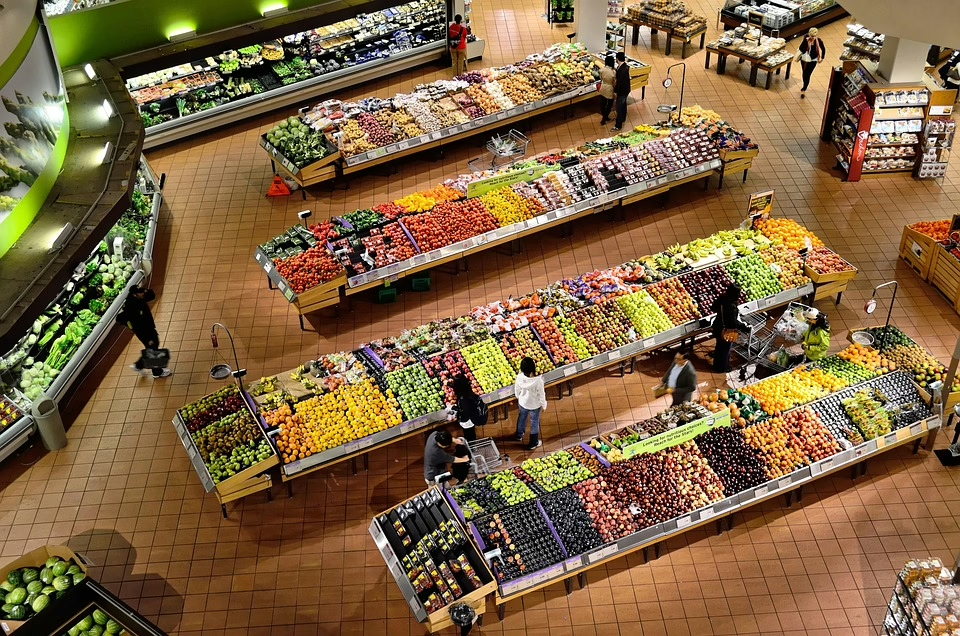Local Flavor, Healthy Choices: Your Guide to Nutritious Eats
In a world where convenience often takes precedence over health, understanding the significance of nutritious eating is more important than ever. This article serves as your ultimate guide to embracing local flavors while making healthy choices. Through a deep dive into the importance of local produce, the benefits of a balanced diet, and practical tips for making healthier food choices, we aim to empower you to make informed decisions about what you eat.
The Importance of Local Produce
1. Freshness and Flavor
Local produce is typically fresher than its imported counterparts. Fruits and vegetables that are grown locally are harvested at their peak maturity, meaning they are often more flavorful and nutritious. For instance, tomatoes that ripen in the sun are more vibrant in flavor compared to those that are picked early and shipped long distances.
2. Nutritional Benefits
Research has shown that the nutritional content of produce can diminish over time. A study published in the Journal of Agricultural and Food Chemistry indicates that fruits and vegetables begin to lose vitamins and antioxidants soon after being harvested. Local foods, which go from farm to table more quickly, retain more of their nutritional value. Accessing nutritious local options can significantly enhance your diet.
3. Supporting Local Economies
Buying local not only benefits your health but also supports the local economy. Local farmers use sustainable practices and contribute to the community by keeping money within the region. According to the American Farm Bureau Federation, every dollar spent on local produce supports local jobs and the agricultural community.
4. Environmental Impact
Choosing local foods reduces your carbon footprint. Transportation of food over long distances requires fossil fuels, contributing to greenhouse gas emissions. By opting for local produce, you help reduce these emissions and promote a more sustainable food system.
5. Seasonal Eating
Eating local often means eating seasonally, which can lead to a more varied and healthy diet. Seasonal foods are usually at their peak flavor and nutrient density. Many local farmers’ markets offer seasonal produce, allowing you to diversify your meals and experiment with new ingredients.
Understanding Nutritional Choices
1. Macronutrients and Micronutrients
To make informed choices about what to eat, it’s essential to understand macronutrients (proteins, fats, and carbohydrates) and micronutrients (vitamins and minerals).
- Proteins: Essential for muscle repair and immune functions. Sources include beans, lentils, and locally raised meats.
- Fats: Importance of healthy fats found in avocados, nuts, and olive oil cannot be understated. They are crucial for brain health.
- Carbohydrates: Opt for whole grains, fruits, and vegetables rather than sugary processed foods.
Micronutrients, although needed in smaller quantities, are vital for overall health. A diverse diet rich in local produce can help meet these micronutrient needs.
2. Portion Sizes and Moderation
The importance of portion control and moderation cannot be overlooked. Understanding serving sizes is key to managing caloric intake. Use tools such as food scales or measuring cups when cooking at home. When dining out, consider sharing dishes or ordering small plates.
3. Meal Planning
Planning meals ahead of time can dramatically improve your chances of making healthy choices. Plan your meals around the seasonal produce available at local markets. This not only ensures that you are eating healthily but also helps you avoid impulse purchases of unhealthy options.
Healthy Cooking Methods
1. Embrace Whole Foods
Whole foods—those that are minimally processed—are often more nutritious. Think of fresh fruits, vegetables, whole grains, and legumes. Cooking with whole foods can inspire creativity in the kitchen and lead to healthier meals.
2. Cooking Techniques
The method of cooking can greatly affect the nutritional value of food. Here are some healthy cooking methods:
- Steaming: This method retains most nutrients and is great for vegetables.
- Roasting: Roasting enhances flavors and doesn’t require excess fats if done properly.
- Grilling: A healthier option compared to frying, grilling meats can also reduce the need for additional oils.
- Sautéing: Using a small amount of healthy fat, such as olive oil, can still keep dishes nutritious.
3. Flavoring Naturally
Instead of relying on heavy sauces and salt, use herbs and spices to enhance flavors in your dishes. Fresh herbs like basil, cilantro, and parsley can add vibrant taste while providing nutritional benefits.
Community Resources
1. Farmers’ Markets
Farmers’ markets are a treasure trove for local flavors and healthy choices. Not only can you find fresh produce, but many farmers also offer eggs, honey, and homemade goods. Visiting a farmers’ market can also provide a sense of community and connection to the people who grow your food.
2. Community Supported Agriculture (CSA)
Joining a CSA is a great way to receive fresh, seasonal produce regularly. Members pay upfront to receive a share of the harvest, which helps local farmers while providing you with fresh ingredients. This approach encourages you to discover new vegetables and recipes.
3. Cooking Classes
Consider participating in cooking classes focused on local ingredients and healthy cooking methods. Many communities offer workshops where you can learn about nutrition and how to prepare meals using locally sourced foods. These classes can enhance your cooking skills and inspire healthier choices.
Understanding Labels and Ingredients
1. Reading Labels
When shopping, knowing how to read labels can help you make informed choices. Look for products with natural ingredients, and avoid those with long lists of additives. Nutrition labels provide vital information about serving size, calories, and the amount of nutrients.
2. Organic vs. Conventional
Understanding the difference between organic and conventional produce is essential. Organic foods are grown without synthetic pesticides and fertilizers, which can be beneficial to your health and the environment. However, conventional produce can still be a healthy choice when local options are unavailable.
3. Choosing Whole Grains
Incorporate whole grains into your diet instead of refined grains. Whole grains, such as brown rice, quinoa, and whole wheat, provide more nutrients and are a better source of fiber, aiding digestion and keeping you full longer.
The Role of Mindful Eating
1. Awareness of Hunger Cues
Mindful eating involves being aware of your body’s hunger and fullness signals. Taking the time to listen to your body can lead to more satisfying meals. Eating slowly allows you to enjoy flavors and can help prevent overeating.
2. Eliminate Distractions
When eating, try to eliminate distractions, like watching TV or using your phone. Focus on the meal at hand, which can enhance your dining experience and promote healthier choices.
3. Appreciate Your Food
Taking a moment to appreciate where your food comes from can cultivate gratitude and mindfulness. Recognizing the farmers, the land, and the process that brought food to your table can deepen your relationship with your meals.
Conclusion
Navigating the world of nutritious eating while savoring local flavors can transform your culinary experience and enhance your overall health. By choosing local produce, understanding nutritional concepts, exploring healthy cooking methods, and embracing community resources, you can make better choices that nourish your body and support your local economy.
Incorporating these practices into your lifestyle doesn’t have to be overwhelming. Start small and gradually shift towards a diet rich in local flavors and nutritious choices. Your taste buds, your body, and your community will thank you.
References
- American Farm Bureau Federation. (2022). “The Economic Impact of Local Food Systems”.
- Journal of Agricultural and Food Chemistry. (2021). “Nutritional Degradation During Transport: The Case for Local Produce”.
- Harvard T.H. Chan School of Public Health. (2020). “Nutritional Guidelines for Healthy Eating”.
By making conscious choices rooted in local flavor and nutritional knowledge, you can embark on a journey toward healthier eating that celebrates the bounty of your community. Enjoy!


























Add Comment